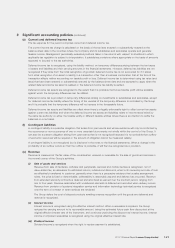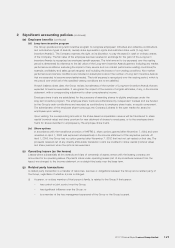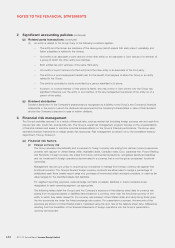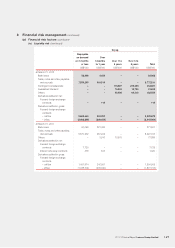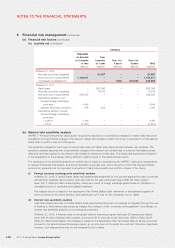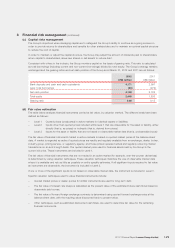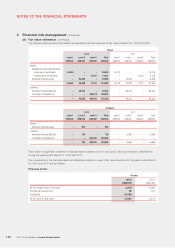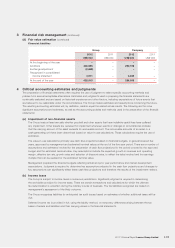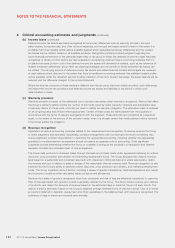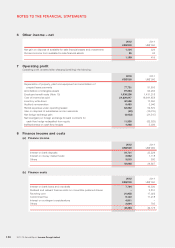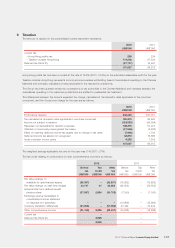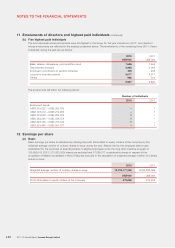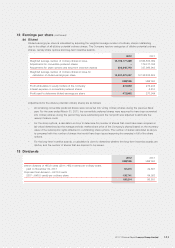Lenovo 2012 Annual Report Download - page 133
Download and view the complete annual report
Please find page 133 of the 2012 Lenovo annual report below. You can navigate through the pages in the report by either clicking on the pages listed below, or by using the keyword search tool below to find specific information within the annual report.
2011/12 Annual Report Lenovo Group Limited 131
3 Financial risk management (continued)
(d) Fair value estimation (continued)
Financial liabilities
Group Company
2012 2011 2012 2011
US$’000 US$’000 US$’000 US$’000
At the beginning of the year ––––
Additions 426,666 –252,708 –
Exchange adjustment (2,662) –––
Recognized in consolidated
income statement 4,911 –3,385 –
At the end of the year 428,915 –256,093 –
4 Critical accounting estimates and judgments
The preparation of financial statements often requires the use of judgment to select specific accounting methods and
policies from several acceptable alternatives. Estimates and judgments used in preparing the financial statements are
continually evaluated and are based on historical experience and other factors, including expectations of future events that
are believed to be reasonable under the circumstances. The Group makes estimates and assumptions concerning the future.
The resulting accounting estimates will, by definition, seldom equal the related actual results. The following are the more
significant assumptions and estimates, as well as the accounting policies and methods used in the preparation of the financial
statements:
(a) Impairment of non-financial assets
The Group tests at least annually whether goodwill and other assets that have indefinite useful lives have suffered
any impairment. Other assets are reviewed for impairment whenever events or changes in circumstances indicate
that the carrying amount of the asset exceeds its recoverable amount. The recoverable amounts of an asset or a
cash-generating unit have been determined based on value-in-use calculations. These calculations require the use of
estimates.
The value-in-use calculations primarily use cash flow projections based on financial budgets, in general covered five
years, approved by management and estimated terminal values at the end of the five-year period. There are a number of
assumptions and estimates involved for the preparation of cash flow projections for the period covered by the approved
budget and the estimated terminal value. Key assumptions include the expected growth in revenues and operating
margin, effective tax rate, growth rates and selection of discount rates, to reflect the risks involved and the earnings
multiple that can be realized for the estimated terminal value.
Management prepared the financial budgets reflecting actual and prior year performance and market development
expectations. Judgment is required to determine key assumptions adopted in the cash flow projections and changes to
key assumptions can significantly affect these cash flow projections and therefore the results of the impairment reviews.
(b) Income taxes
The Group is subject to income taxes in numerous jurisdictions. Significant judgment is required in determining
the worldwide provision for income taxes. There are certain transactions and calculations for which the ultimate
tax determination is uncertain during the ordinary course of business. The tax liabilities recognized are based on
management’s assessment of the likely outcome.
The Group recognizes liabilities for anticipated tax audit issues based on estimates of whether additional taxes will be
due.
Deferred income tax is provided in full, using the liability method, on temporary differences arising between the tax
bases of assets and liabilities and their carrying values in the financial statements.


